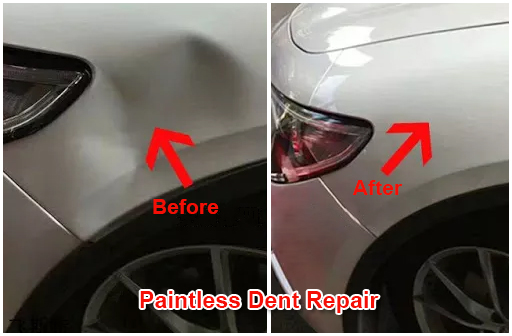Paintless Dent Repair (PDR)
Paintless dent repair (PDR), also known as paintless dent removal, describes a method to remove small dents from an automobile body. As long as the painted surface is intact, paint free dent repair can be used to repair various damages. Both aluminum and steel plates can be repaired with paint free dents.
The most common practical use of paintless dent repair is the repair of hail damage, door sting, small creases, large dents and body line damage.
The method can also be used to prepare damaged panels for re spraying by minimizing the use of body filler. This technology is currently known as "push coating" or "push coating".
The limiting factors for successful repair using paintless dent repair include the flexibility of the coating (most refined automotive coatings today can achieve successful PDR) and the extent to which the metal is damaged and stretched, depending on the thickness of the paint film. Metal, curvature or flatness of damage and impact strength. Generally speaking, the shallower the dent, the greater the possibility of repairing the unpainted dent. Dents several inches in diameter can be repaired even by this method as long as the metal and paint are not stretched. Shallow large dents or creases can be repaired to an acceptable level, but very sharp dents and creases may not be suitable for the repair of unpainted dents.

Repair technology
The most common unpainted dent repair technology is to push the dent from the underside of the body panel with a metal rod and pick. The dents can be pulled from the outside of the panel using glue and specially designed lugs. Fine tuning a repair usually involves tapping the repair to remove small high points. Technicians can mix high points to match the texture of paint called orange peel. Although repainted surfaces have a greater possibility of cracking, cracking or fragmentation can be avoided by heating.
Post time: Nov-12-2021